Exactly 30 years ago, Beat of Hawaii editor, Jeff, was scheduled to die. He held a boarding pass on Thai Airways 311 and decided at the last minute not to go. The plane crashed, and there were no survivors. So, as an avid traveler and writer, airline safety has always been his top concern.
With all the talk about ancillary airline fees, the popular post on picking seats on flights to Hawaii, paying for an exit row, aisle, and window seat, and upgrades and the like, we were reminded by your comments of the stark reality that that choosing the safest seat on an airplane may be a matter of life and death. It was for one of Jeff’s friends.
Then you’ll recall what happened last year that is pictured above. It was the terrifying United 777 engine fire incident en route to Hawaii, which (thankfully) ended uneventfully. Another UAL Boeing 777 Hawaii flight suffered an in-flight fan blade separation over the Pacific a few years ago, which also ended well.
Delta flight 191: tragedy revisited.


Beat of Hawaii’s friend and former co-worker, Jean Hancock (sister of Herbie), died on Delta Flight 191 when it crashed on landing at DFW. That occurred exactly 37 years ago. Jean died far too young. It’s something that’s always haunted both of us. She was returning from visiting family in Florida and, as a frequent flyer, was upgraded to first class. On approach to landing, the plane crashed due to extreme microburst wind shear in a storm.
Survivors were those in the rear of the plane.
NTSB said the accident resulted from the crew’s decision to fly through the thunderstorm, lack of procedures to avoid and escape microbursts, and lack of wind shear information. Most of the 27 survivors of Flight 191 were located in the plane’s rear section, which broke free from the main fuselage before the aircraft hit a water tank. NASA developed technology that detects wind shear and microburst conditions based on this accident. In 1994, wind shear detection was installed and became mandatory on aircraft.
“In 11 of the 20 crashes, rear passengers clearly fared better. Only five accidents favored those sitting forward.”
Some data suggest rear seating is the safest seat on airplanes.
BOH commenter and personal friend Colleen said: “We choose seats a bit further back in the plane (safer, even in event of a disaster), and then just relax once we land and let everyone else get off first.”And according to the Times article linked to in the prior sentence, sitting in a middle seat of all things, located in the rear third of the plane, is safest. Those have the lowest fatality rate compared with a window or aisle seat.
Reports on safety data that we’ve read have been somewhat conflicting. However, one study examining 36 years of crash data indicated that the further back in the plane you sit, the safer you are.
Consistent Advice: Sit Near An Exit Row.
Other advice we’ve heard within the industry, have read widely, and try to follow suggests that you’re safer if you sit on the aisle close to an exit row. So if you’re paying for an exit row, you might be safest if you choose one near the plane’s rear. Unfortunately, it’s typically quieter and less turbulent in the front, where planes tend to be more stable.
One Additional Thought: What To Wear For Safety
Two of the most important things you can do to improve safety on the plane are related to your clothes and shoes. Experts say to avoid taking shoes off when boarding, as half of the airline incidents occur during takeoff and landing. Some believe that shoes-on should be mandatory.
Also, consider wearing clothes made of non-flammable materials. Jeans are considered a top pick.
A Personal Tragedy Averted: Thai Airways Flight 311.
As we said at the beginning of the post, Beat of Hawaii editor Jeff had purchased a ticket and a boarding pass (those were issued far in advance prior to 9/11) for the three-hour flight from Bangkok to Kathmandu. On that Friday, July 31, 1992, the Airbus A310 crashed on approach to Kathmandu. The plane hit the side of the mountain in the narrow approach some 23 miles before landing. All 99 passengers and 14 crew members were killed. This was the first fatal accident and hull loss involving that aircraft type.
Jeff changed his mind and had taken the prior day’s flight, on Thursday. He was returning home to the U.S. on a flight from New Delhi to Frankfurt the next day when he read the International Herald Tribune and saw the report. It was beyond chilling and is always something he remembers. He has retained both the boarding pass and the newspaper article.
Another haunting Hawaii airline incident: Remembering Aloha Airlines | Flight 243
Never far from our minds is what happened 34 years ago on Aloha Airlines Flight 243 and its “miracle landing.” Do you remember Aloha Airlines flight 243?
The aircraft roof ruptured mid-fight, which resulted in an 18-foot section of the plane being torn off from the cockpit to the wing. When this happened, the sky was visible from within the aircraft. The cause was “explosive decompression caused by metal fatigue and maintenance error.” This plane had among the highest takeoffs and landings of any 737 at the time due to the short duration of interisland flights.
One person died, the flight attendant who was ejected from the plane, and 65 others were injured. The plane diverted to Kahului and landed safely, which was anything but assured under the circumstances.
Is flight number 191 cursed?
In researching, we found that to date, three different flights, in addition to the one discussed at the beginning, all numbered 191, have crashed. That should put an end to any airline using that flight number.
The first crash was Prinair, which occurred in 1972 in Puerto Rico. The aircraft stalled and crashed on the runway following a missed approach.
Then in 1979, an American DC-10 heading from Chicago to Los Angeles crashed immediately after takeoff when the left engine separated from the aircraft. All 271 onboard and two people on the ground were killed. Following that crash, DC-10 aircraft suffered from reputation impairment.
Next came the Delta incident above. Another Delta flight followed it. This one occurred in 2006 when a Delta Connection operated at Comair Flight 191, from Lexington to Atlanta, crashed on takeoff, killing 49 of the 50 onboard. The pilots had accidentally used the wrong runway, which was not long enough for departure. The cause was deemed multiple pilot errors. There were also poor markings on the runway.
Please add your thoughts.
Do you think about your safety when choosing an airline seat? And would you choose to pay for an exit row at least partly for that reason?
Get Breaking Hawaii Travel News

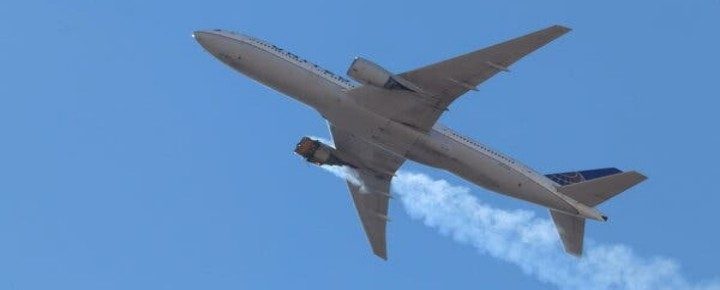
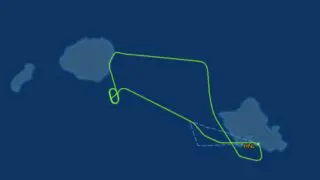
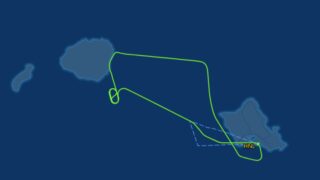
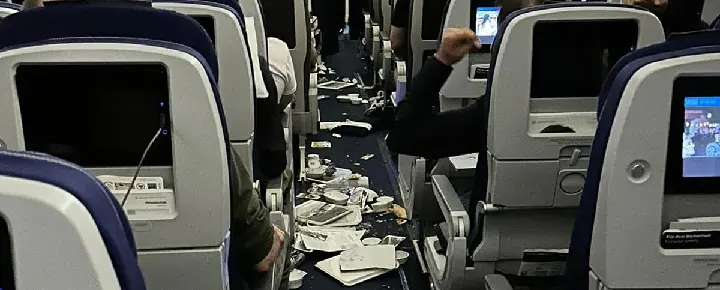

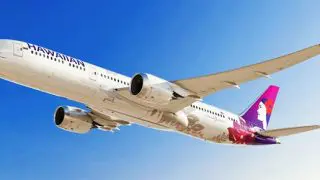
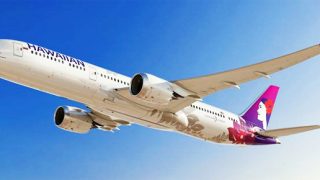
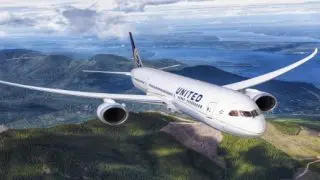

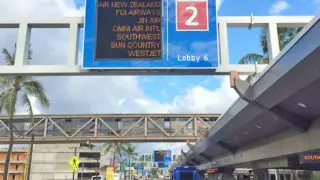
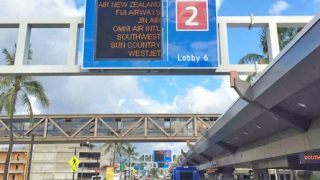
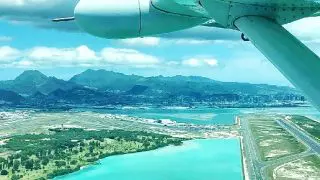
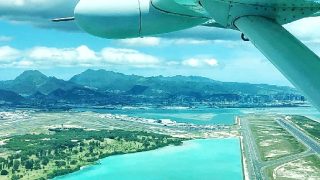
I know many people who have insisted that they shall Never Fly due to these and other instances of planes crashing, or intentionally blowing up, and they actually hold to it. Why they don’t go on Cruises is a bit interesting too. Needless to say, they don’t take many chances. Despite the accidents the percentage of success is well greater than the few losses, with that in mind does it make anyone feel safer? The vast majority don’t think about it, that’s an interesting fact. Unless a loss takes place that somehow effects personally how often is it even more than a quick thought? Flight Precautions are ever changing for the better making it safer to travel, but sometimes an irrational feeling can save your life.
My heart is racing as I read this!
While plane crashes are catastrophic & headline grabbing, statistically it’s a very safe way to travel.
In 2021 there were 176 fatalities worldwide in plane mishaps vs. almost 43,000 traffic fatalities in the US alone.
Personally, we had a flight from SFO to HNL turn back about an hour out with a concern of a rancid “mist” in the cockpit.
Dan Martinez historian was booked on the plane that hit the Pentagon on 9/11 but had delayed his departure to finish some details on a TV project. He was concurrently heading the Dec 7 Symposium. Fate or luck, your choice.
Safety thoughts: Wear the seatbelt all of the time; know where your closest exitS are, count seat backs in both ways; know how to open the emerg exit even if not in the row And know when Not to open it; affirm not taking your shoes off, ever; concisely, calmy report something abnormal citing the Aloha flight passenger.
As to safe clothing: 45-year pilot here. I wear natural fiber (cotton or wool) and am careful to avoid synthetics when I fly. Reason: natural fibers won’t melt into the skin as synthetics will. If I have a fighting chance of escaping a fire, I don’t want plastic melted into me.
Howdy,
Yes, choosing seats depending on the duration of flight has become an art form with, guesswork and some luck.
On the last trip back in April on Delta from Kauai to Tampa, I did a very rare upgrade from economy to “Comfort Plus” since my wife and eye were on the Red Eye to Seattle then a long flight to Tampa from there after a four hour layover. On the Red Eye I chose a window seat so nobody bumping into me so I could sleep. Seat was broken and could only go back one notch. Second flight as we were boarding, agent summarily told us our seats were both reassigned to middle Economy seats. As we entered plane the entire 3 seat row we were supposed to sit in was cordoned off with crime scene tape! Agent was nasty and could care less.
“Second flight as we were boarding, agent summarily told us our seats were both reassigned to middle Economy seats. As we entered plane the entire 3 seat row we were supposed to sit in was cordoned off with crime scene tape! Agent was nasty and could care less.”
And here is why I’m not very interested in paying for upgraded seats.
Crime Scene Tape is typically a “Mood Killer” as well as a Scene Stealer. On a plane all sorts of thoughts come to mind, especially if those were your intended seats,don’t count on the lottery winners to be in your pocket either! As long as the Crime Scene Tape doesn’t extend to the missing pieces of exterior fuselage consider yourself fortunate to have a seat.
Jeff/Rob,
Given the airline safety record, I’ll take the front of the plane anytime I can swing it!
And, that’s where I’ll be on Sep 9 and the 25 going home. Hope I’m not jinxing it.
Aloha!
Hi Rod.
We understand completely. Even after losing Jean in that crash, we do feel prefer seating as close to the front as possible.
Aloha.
One wonders how the death jet aka 737 max has avoided the near total airline boycott of the rep damaged dc10. Are airlines ceos more in love with bonus that deeply discounted planes aid, thinking the public is stupid and greed by the lowest airfare they will risk lives on a plane that killed 341 ppl.
My flying instructor was trained by the female pilot who landed the Aloha flight. I remember when I asked about where to sit on commercial, he said to remember that no planes are designed to crash. A good pilot always errs on the side of caution and I will will change flights in bad weather. On New Years Eve I flew from LIH to HNL and I praised the pilots on the incoming service who opted to return to Honolulu after two go arounds. Three hour delay but the right call. People worry about the long ocean flight to Hawaii but the most dangerous times are not in flight but take off and landing with the other traffic. Still safer than the roads.
“Following that crash, DC-10 aircraft suffered from reputation impairment.”
Reputation impairment… you might have a future in Public Relations, you know?
Actually the DC-10’s reputation was already significantly impaired due to a couple of previous crashes in ’72 and ’74, traced a cargo door that had problems, which led to other problems.
Aloha BOH,
Jeff’s story is gripping and can totally agree with the suggestions offered. Retired (45 yrs) FA here who was working for PSA when they suffered mid air on approach to SAN -we lost many friends who were deadheading and commmuting on flight. Working with AFA and NTSB I was part of 2 aircraft accident investigations – one survivable – and it’s so important to pay attention to FA safety briefings; knowing your exits and how to operate . Praying for safe flights to all destinations …
Mahalo
Hi Cheryl.
Thanks for the input on this. Yes, we too remember the PSA SAN loss.
Aloha.
Yikes!!! so glad you are safe.
Hi Ane.
Thanks! Same here. Grateful.
Aloha.